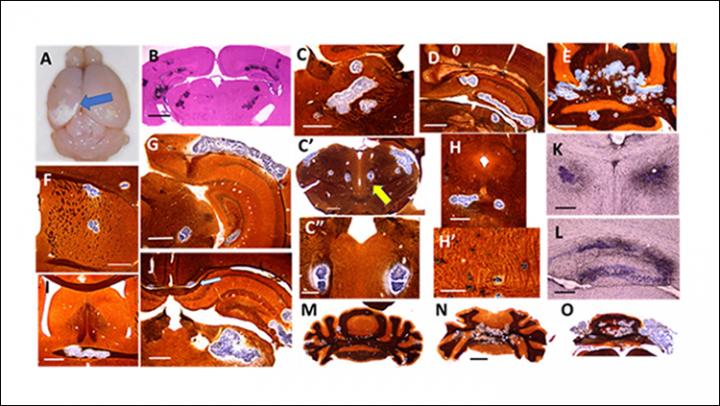Children exposed to the virus in 2015-16 may be at increased risk for developmental disorders like ADHD

Credit: Snyder-Keller et al., JNeurosci (2019)
Mice exposed to the Zika virus during later stages of gestation present behaviors reminiscent of attention-deficit/hyperactivity disorder, according to a study of genetically diverse animals. The findings, published in JNeurosci, suggest children exposed to the virus during the 2015-16 epidemic may harbor increased risk for developmental disorders.
Microcephaly — a smaller than normal head — is the most well-known and visible consequence of Zika virus exposure. Recent research, however, has found brain and behavior abnormalities in Zika-exposed infants without microcephaly.
Abigail Snyder-Keller and colleagues at the New York State Department of Health and the University of Albany School of Public Health examined these more subtle disruptions in male and female mice of four distinct genetic backgrounds. The public health researchers exposed mice to the virus during a period analogous to the third trimester in humans and report different effects depending on the sex and strain of the mouse. This research provides a first step toward studying the full range of possible outcomes in individuals exposed to the Zika virus in the womb.
###
Manuscript title: Mouse Stain and Sex-Dependent Differences in Long-Term Behavioral Abnormalities and Neuropathologies After Developmental Zika Infection
Please contact [email protected] for full-text PDF and to join SfN’s journals media list.
About JNeurosci
JNeurosci, the Society for Neuroscience’s first journal, was launched in 1981 as a means to communicate the findings of the highest quality neuroscience research to the growing field. Today, the journal remains committed to publishing cutting-edge neuroscience that will have an immediate and lasting scientific impact, while responding to authors’ changing publishing needs, representing breadth of the field and diversity in authorship.
About The Society for Neuroscience
The Society for Neuroscience is the world’s largest organization of scientists and physicians devoted to understanding the brain and nervous system. The nonprofit organization, founded in 1969, now has nearly 37,000 members in more than 90 countries and over 130 chapters worldwide.
Media Contact
David Barnstone
[email protected]
Related Journal Article
http://dx.




